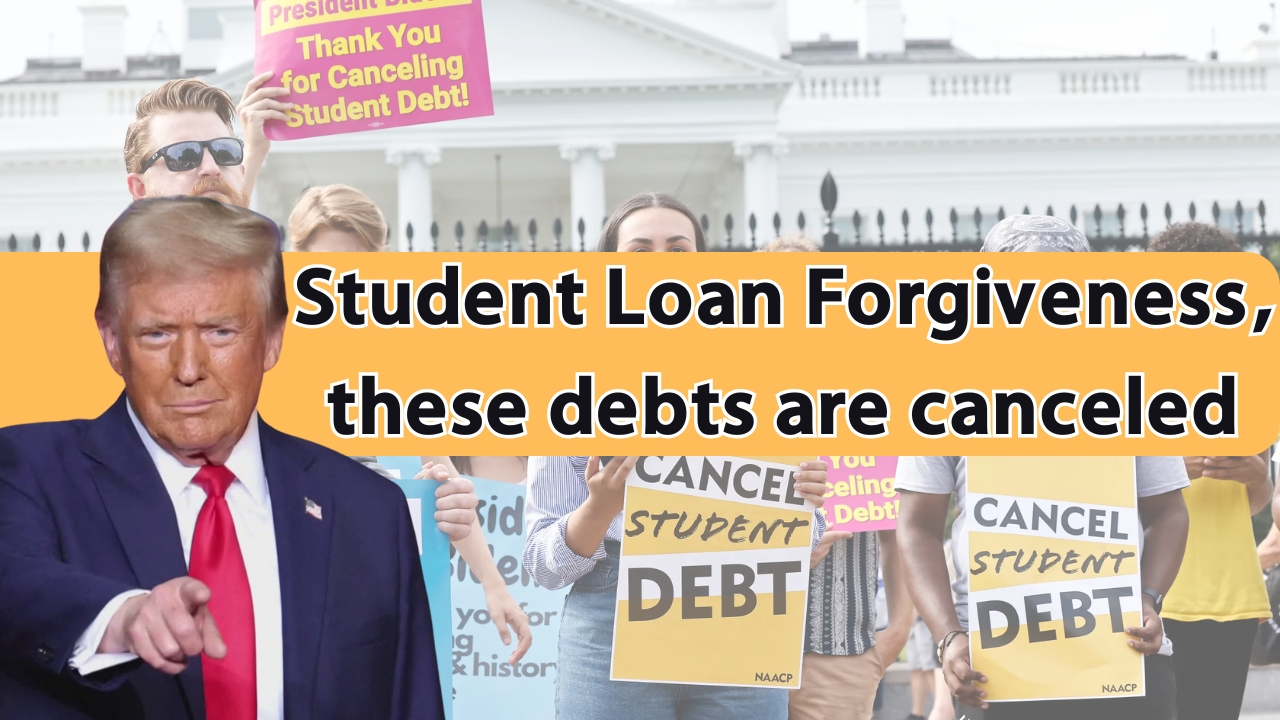As the landscape of higher education financing continues to evolve, student loan forgiveness remains a hot-button issue in the United States.
This comprehensive overview examines the current state of student loan forgiveness programs, recent developments, and what borrowers can expect in 2025 and beyond.
The Shifting Sands of Income-Driven Repayment Plans
SAVE Plan Suspension
The Saving on a Valuable Education (SAVE) plan, introduced by the Biden administration as the “most affordable repayment plan,” has hit a significant roadblock.
On February 18, 2025, the 8th Circuit Court of Appeals upheld a temporary block on the SAVE plan, siding with a coalition of Republican-led states that challenged the program’s legality.
Department of Education’s Response
In a move that has sent shockwaves through the student loan community, the Department of Education ceased accepting applications for all income-driven repayment (IDR) plans on February 25, 2025.
This decision extends beyond the SAVE plan, affecting millions of borrowers enrolled in various IDR programs.
Impact on Borrowers
The suspension of IDR applications has left approximately 8 million SAVE plan enrollees and countless others in existing IDR plans in a state of uncertainty.
Prior to this development, SAVE borrowers were in general forbearance, with no required monthly payments and no accruing interest.
The Office of Federal Student Aid had projected that accurate monthly payment calculations for these borrowers might not be possible until September 2025.
Legal Challenges and Their Implications
The 8th Circuit Court Ruling
The recent court decision goes beyond merely blocking the SAVE plan.
The ruling questions the Department of Education’s authority to design repayment plans that lead to substantial loan forgiveness rather than full repayment.
This interpretation could have far-reaching consequences for existing IDR plans such as Pay As You Earn (PAYE) and Revised Pay As You Earn (REPAYE).
Potential Consequences for Existing Plans
The court’s reasoning suggests that the forgiveness provisions in plans like PAYE and REPAYE might be legally questionable.
This raises concerns about the future of these programs and the borrowers who have been counting on them for eventual debt relief.
The Political Landscape and Its Impact
Change in Administration
With the Trump administration now at the helm, the future of student loan forgiveness programs is shrouded in uncertainty.
The appointment of Linda McMahon as Secretary of Education signals a potential shift in the Department’s approach to student loan policies.
Congressional Action
As the executive branch grapples with these issues, there’s growing pressure on Congress to step in and more clearly define the terms of income-driven repayment plans.
However, achieving bipartisan agreement on such a contentious issue remains a significant challenge, especially during a busy legislative session.
What This Means for Borrowers
Short-term Implications
-
Application Freeze: Borrowers can no longer apply for income-driven repayment plans, including those not directly affected by the court ruling.
-
Payment Uncertainty: Those already enrolled in IDR plans face uncertainty about their future monthly payments and forgiveness timelines.
-
Potential Payment Increases: If the SAVE plan and other IDR options are permanently blocked, some borrowers could see significant increases in their monthly payments.
Long-term Considerations
-
Reevaluation of Repayment Strategies: Borrowers may need to reassess their long-term repayment strategies in light of these developments.
-
Alternative Forgiveness Options: With IDR plans in jeopardy, borrowers might need to explore other forgiveness programs or repayment options.
-
Financial Planning Adjustments: The uncertainty surrounding loan forgiveness may require borrowers to adjust their financial plans and budgets.
Advocacy and Support
Student Loan Advocacy Groups
Organizations like the Student Borrower Protection Center have been vocal in their criticism of the recent developments.
They argue that the Trump administration’s actions go beyond what the court legally required and will inflict significant hardship on millions of working families.
Resources for Borrowers
Despite the current uncertainty, borrowers are not without resources:
-
Federal Student Aid Website: While applications are paused, the site remains a crucial source of information.
-
Financial Advisors: Seeking professional financial advice can help borrowers navigate these complex changes.
-
Legal Aid Organizations: Some organizations offer free or low-cost legal advice for student loan borrowers.
Looking Ahead: Potential Scenarios
Scenario 1: Reinstatement of IDR Plans
There’s a possibility that legal challenges or new legislation could lead to the reinstatement of SAVE and other IDR plans, potentially with modifications to address legal concerns.
Scenario 2: New Repayment Programs
The Department of Education might develop new repayment programs that align more closely with the court’s interpretation of the law, focusing on full repayment rather than forgiveness.
Scenario 3: Congressional Intervention
Congress could pass legislation that explicitly authorizes loan forgiveness under IDR plans, resolving the legal ambiguities highlighted by the court.
Student Loan Forgiveness : Navigating Uncertain Waters
The student loan landscape in 2025 is marked by unprecedented uncertainty.
As legal battles continue and policy debates rage on, borrowers must stay informed and prepared to adapt their repayment strategies.
While the future of large-scale loan forgiveness programs remains in question, it’s clear that the issue of student debt will continue to be a central topic in American higher education and economic policy discussions.
For now, borrowers should:
-
Stay informed about policy changes and legal developments.
-
Explore all available repayment options, including those outside of IDR plans.
-
Consider consulting with financial advisors or student loan experts.
-
Engage with advocacy groups and elected officials to make their voices heard on this critical issue.
As the situation evolves, it’s crucial for all stakeholders – borrowers, educators, policymakers, and advocates – to work towards sustainable solutions that balance the need for affordable education with the financial stability of both individuals and the nation as a whole.
